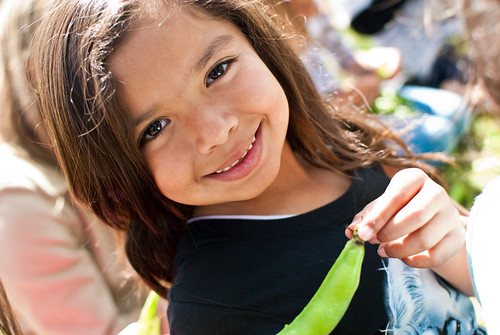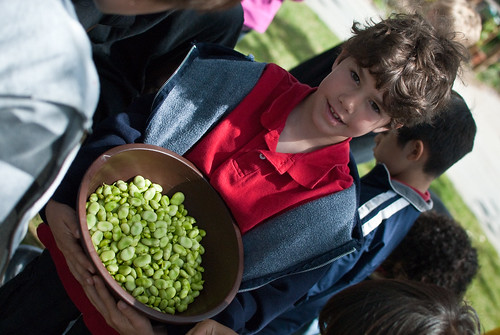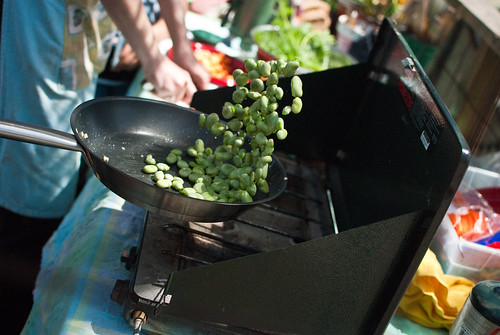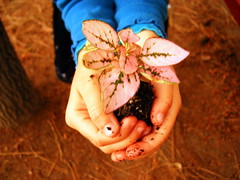
Miss Karen's Second Graders have been reaping the benefits of all the hard work they have been doing in the K-2 Garden throughout this school year.

For the past two months now, we have been harvesting & eating lettuce, carrots & radishes. The kids say everything tastes great ! The most exciting part of all this work, is definitely pulling out the carrots. There is nothing like pulling on the green foliage and then finding that there is a big orange surprise on the other end.

Last winter in the garden we didn't have much success with carrots, but we learned this year that radish's & carrots are
companion plants. If you plant a carrot seed with a radish seed next to it, and continue on that way, they seem to thrive together. The radish germinates right away, within a week's time and grows to harvest within 30 days. During that time the carrot seeds slowly germinate underneath the foliage of the radishes. Once you harvest your radishes, the carrots take over and are ready in about 60 to 70 days, a long time to wait, but in the end we think its worth it !


Our edible garden plans started this past fall in October after we visited
LaMilpa Organic Farm for a field trip. While we were there we learned about the difference between soil & dirt. Soil has living things in it to help a plant thrive, while dirt has nothing in it. We also had a great time tasting different types of greens at the farm and really got excited about planting our own.

When we got back to our own school garden, we got busy adding healthy soil (compost), then we sketched out the plan for everything we wanted to grow from
seed. Last year we planted quite a bit of plants that were already started so we really wanted to try seeds and transform our spot into a mini Second grade farm.



What we learned;
~The beets, spinach and chives did not germinate and grow. We think it is because chives needed warmer weather and we just are not sure about the spinach & beets yet, but are working on it.
~We learned how to harvest lettuce by cutting the leaves that are ready to eat on the outside and leaving the baby leaves in the center to grow for the following weeks salad. We also learned how to plant new seeds every other week to keep new lettuce plants growing to replace the old. We also practiced this with carrots & radishes.
~We learned which plants are weeds, and there are several kinds of those popping up everywhere to keep busy hands at work.
~We learned how far away to plant seeds from each other so they have enough room to grow, and how to thin the seedlings after they germinate, in case they are to close together.
~ We also learned that Fish Emulsion smells really yucky, but it helps our plants grow, we used it once a month since January.

We have also planted Fava Beans along the back fence of the garden, those were planted in October and are almost ready to harvest. In addition we planted sugar snap pea's along the fence and the tee-pee, and have been eating those all along, very sweet and yummy. Along the outside fence for some color we planted one of our favorites, Iceland Poppies.

We even have journals to document what we have done !

If you are a Parent or Grandparent at our school and want to help your child's teacher start their mini-classroom farm, please contact me and I can get your started !
~Amy

























